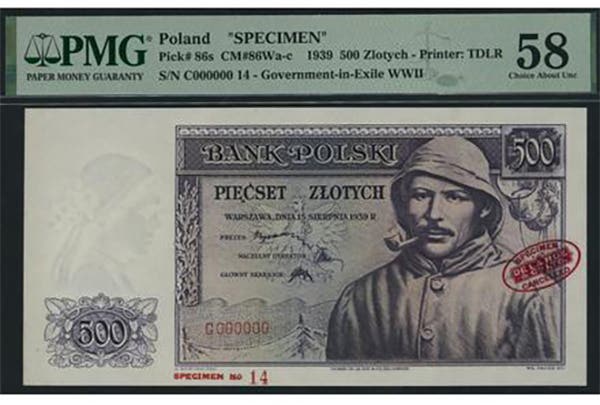Notes of scenic Susquehanna towns
By Mark Hotz I had the opportunity recently to make a trip up the Susquehanna River to Selins Grove, Pa. Along the way, I passed several towns that had note-issuing…
By Mark Hotz
I had the opportunity recently to make a trip up the Susquehanna River to Selins Grove, Pa. Along the way, I passed several towns that had note-issuing national banks. Many were quite picturesque, so I decided to include two of them, Liverpool and Halifax, for this month’s article.
From Interstate 83/81 at Harrisburg, the road north is US 11/15, a route that hugs the Susquehanna River’s west side. We were headed upriver into Perry County and quaint Liverpool, Pa., whose Front Street faces the river.
Liverpool was settled in 1808 and organized as a borough in 1832. The town’s Front Street was laid out directly facing the Susquehanna River, which, because of rocky outcroppings, is not well navigable past Harrisburg. Liverpool’s survival was based on the creation of the Pennsylvania Canal, which paralleled the Susquehanna River north to Northumberland, a total distance of 39 miles. The canal was completed in 1829. The canal brought industry to all the communities it served, along with a rowdy bunch of characters. Liverpool served as a hub at the halfway point of the Main Line, hosting an active local business community including hotels, canal boat builders and the usual businesses found in a self-sustaining town of the era.
The railroads forced many canals out of business, but because no track was ever laid on the west side of the Susquehanna, the Pennsylvania Canal remained open to private operators until 1926. In the meantime, Liverpool had grown into a fairly lively commercial hub, with several fine hotels.
In 1906, the First National Bank of Liverpool, charter #8326, opened its doors, and amazingly, remains in business to this day. It was never a very large bank, with a total issue of just $482,000, of which a mere $1,320 in large notes was outstanding in 1935. I particularly wanted to visit the town and its bank because I have a very nice Series of 1902 $5 note in my collection (see photo). This is by no means a common bank – a mere three large notes (including mine) are reported, though I believe now the number is probably double that, with another ten to fifteen in small size.
It is not hard to find things in Liverpool. I had a couple of old photos of the First National Bank building – one from 1906 with bank president Charles Snyder standing on the front steps; another from 1918 shows the building draped with a large “V” indicating victory in World War I. As I noted, the bank is still in business today, and as such, the building has had some improvements and expansions over the years. I have included a photo of the bank building as it appears today – you can easily see where the old structure was expanded but still retains its original architectural integrity. I have also included a photo of a small size note issued by this bank.
Since there is no bridge across the Susquehanna at Liverpool or nearby, I headed south along US 11/15 to Benvenue, where the highway crosses the river, and then north on State 147 to Halifax, an old town on the east side of the Susquehanna in Dauphin County. Halifax was incorporated as a borough on May 29, 1785, and is situated at the confluence of Armstrong Creek and Susquehanna River. The population was 875 at the 2000 census. Fort Halifax was located along the Susquehanna River near the present-day borough. It was a temporary stronghold for the Pennsylvania colonial militia from 1756 to 1757, during the French and Indian Wars.
The Halifax National Bank received charter No. 5601 in October of 1900 and has remained in business ever since. As a note-issuing national bank for 35 years, it was rather small, putting out just $474,000 in total circulation during that time period. I am delighted to have a pristine Series of 1882 $20 Value Back note from this bank (an amazing rarity just as a type in this grade) and wanted to see the issuing structure. What a delight it was, then, to find the bank perfectly preserved and looking exactly as it did at the turn of the 20th century!
Halifax is not very far from Harrisburg, the state capital, and has become a quaint bedroom community for those who work there. I was delighted to find the Halifax National Bank, still operating under its own name today as a division of Riverview National Bank. The original structure was built in 1900 and is virtually identical in style to several other banks that I have seen of this vintage, in particular the well-preserved old Tower City National Bank (Pennsylvania).
The Halifax National Bank is located at 3rd and Market Streets, at the center of the town, just across from the historical old Episcopal Church, erected in 1859, which now serves as the Halifax Area Historical Society. The bank building, as you can see from the photo, is in amazing condition and virtually unchanged over the years. It is such a reward to find an old bank this well preserved, and still in use! In addition to my Value Back note, I have included photos of a small size note issued by this bank.
Readers may address questions or comments about this article or national banknotes in general to Mark Hotz directly by email at markbhotz@aol.com.
This article was originally printed in Bank Note Reporter. >> Subscribe today.
If you like what you've read here, we invite you to visit our online bookstore to learn more about Standard Catalog of United States Paper Money.








